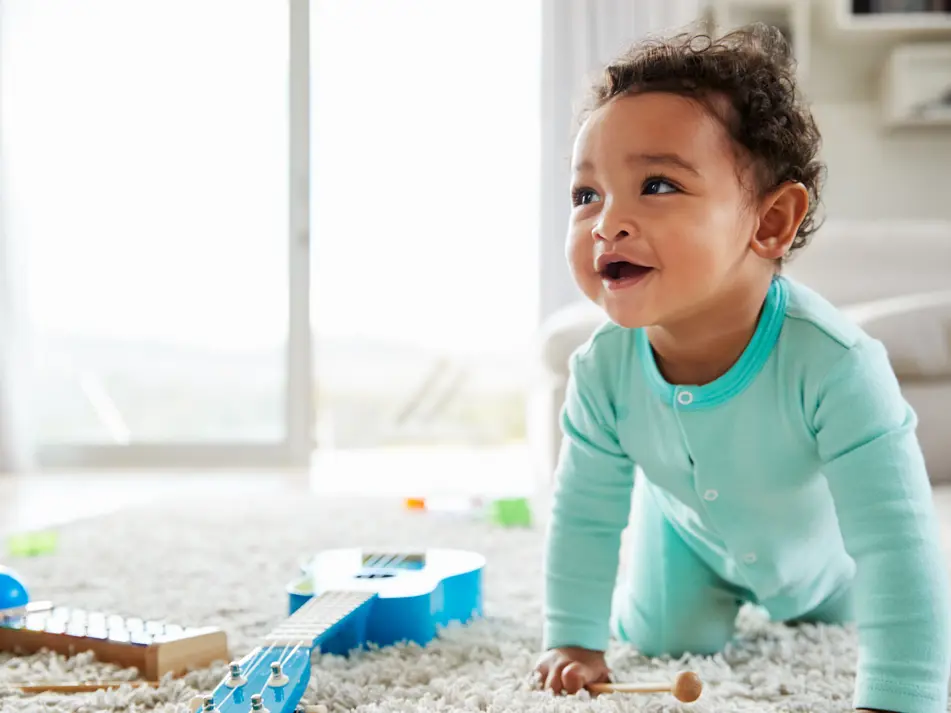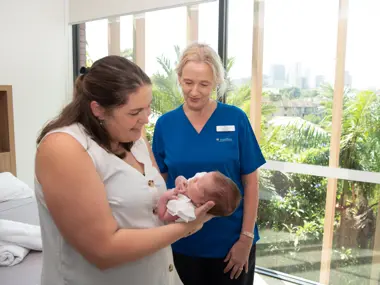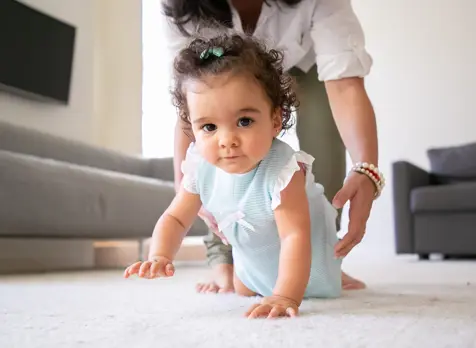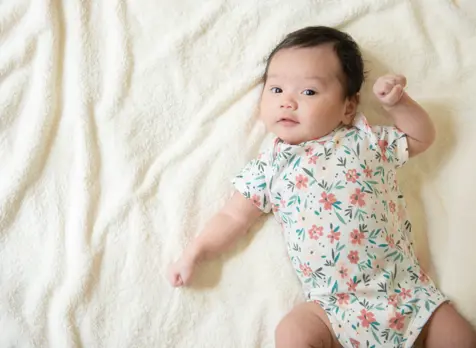Baby Crawling & Walking

On this page
- Baby stages of crawling and walking
- Stages of crawling: newborn
- Stages of crawling: 3 months
- Stages of crawling: around 6 months
- Stages of crawling and development of walking: around 9 months
- Stages of crawling and development of walking: around 12 months
- Safety concerns when your baby starts moving
Learning to crawl and walk are exciting milestones in a baby's life. From the moment your little one enters the world, they start learning the skills they need to gradually gain this independence.
Baby stages of crawling and walking
The first step to crawling begins from birth. Provide your baby with tummy time and floor play to help develop head control, body strength and assist with their ability to learn to crawl. Start by laying your baby on your chest while lying down (remember not to fall asleep). When they're doing tummy time, stay with your baby and remain alert as they are at a greater risk of SIDS or suffocation. Only practice tummy time when your baby is enjoying this activity.
Crawling is not a developmental milestone, however most babies will crawl by 12 months, and generally prior to walking. There are many individual and interesting crawling styles that babies will adopt to get them from where they are to where they want to be. Children may begin walking at any age prior to 18 months.
Stages of crawling: newborn
- At the beginning they have no or minimal head control.
- When held in a sitting position, their back is curved and head will fall forward.
- At around one month, they will keep their head to one side when lying on their back and move their arms and legs in large jerky movements.
Stages of crawling: 3 months
- Has good head control.
- Hands loosely open.
- Needs shoulders supported when being bathed or dressed.
- Lying on their front, they can lift head and front portion of their chest to a 90 degree angle, taking their weight on the forearms.
- Can start to sit for short periods of time in a well supported sitting position.
- When held in a standing position on a firm surface they will sag at the knees.
Stages of crawling: around 6 months
- Will roll from abdomen to back around 5–6 months.
- Will roll from back to abdomen around 6–7 months.
- Head control well established.
- Will sit with support, head and back are straight. Able to turn head from side to side to look around.
- Has increasing coordination of their hands (from four to six months).
Stages of crawling and development of walking: around 9 months
- Pulls self to a sitting position. Can sit alone unsupported. They will begin to explore their surroundings in this position.
- Will adjust body posture when leaning forward to pick up or play with a toy, without losing their balance.
- Can bear all their weight on their legs when held to standing and steps purposefully on alternate feet.
- Will roll, wriggle on abdomen or crawl across the floor, to get what they want.
- Can pull to standing and stand holding furniture.
- When being carried by an adult, supports self in an upright position and turns head to look around.
Stages of crawling and development of walking: around 12 months
- Sits on the floor for long periods.
- Easily goes from lying down to sitting position.
- Crawls on hands and knees, may crawl up stairs.
- Pulls to stand, holding onto furniture and able to sit down again.
- Walks while holding onto furniture, or if two hands are held.
- May walk with one hand held or alone without support.
Safety concerns when your baby starts moving
Making sure your baby is safe becomes paramount when they start to crawl and take those first wobbly steps. As your little explorer becomes more mobile, it's essential to create a safe environment that minimises potential hazards.
Start by baby-proofing your home, securing sharp objects, covering electrical outlets, and installing safety gates to block off dangerous areas and shutting doors to bathrooms and kitchens where able. Keep small objects, choking hazards, and toxic substances out of their reach.
Be vigilant about supervising your baby during this stage, as they can move surprisingly quickly and may attempt to climb or grab things that pose a danger.
You could also soften the corners of furniture and use safety locks on cabinets as additional precautions that can help prevent accidents.
Most importantly, provide a supportive and loving atmosphere for your baby's exploration as they embark on this exciting journey of growth and discovery.
FAQs about baby crawling and walking
When should a baby crawl? Crawling is not a developmental milestone, but most babies will crawl before walking, by 12months of age.
- Engage in floor play with your child, putting your child on their tummy facing you on your tummy.
- Put toys just out of reach in front of them while they are laying on their tummy.
- Put some pressure behind their feet while they are laying on their tummy to help them get the idea of weight bearing on their arms and moving forward.
- Remove socks from their feet, so they can grip the floor with their toes to help push themselves forward.






































